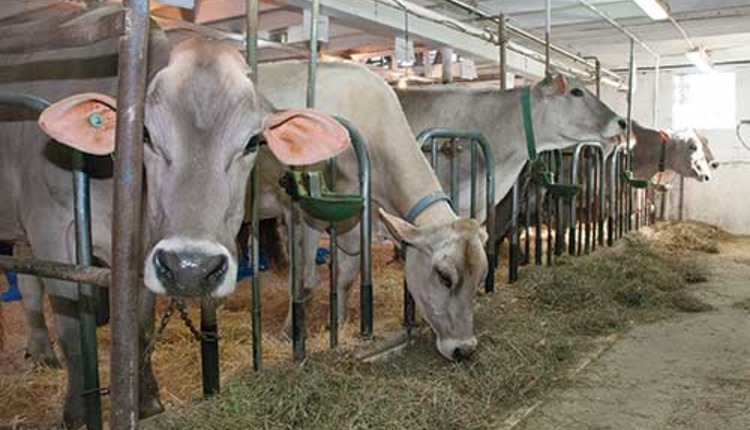Currently in the United States there is a big problem that many people don’t know about. For over the past decade the number of US dairy farms has been steadily declining but not many people know about their problems. The United States dairy herd consisted of 9.4 million cows at the beginning of 2018 which according to the USDA was about a 1% increase over the last ten years. While the number of dairy cows in the United States have stayed nearly the same in recent years the same cannot be said about dairy farms. In 2008 there were 57,127 licensed dairy farms in the United States and in 2017 40,217 dairy farms remain.
In 1992 there were 131,509 licensed dairy farms in the United States and ever since then have been decreasing at a rate of about 4.7% a year. Since 1992 the amount of dairy farms has decreased drastically and so has the average herd size on the dairy farms. The average herd size in 1992 was about 74 cows/herd and the average herd size now is roughly 187 cows/herd.

Source: Hoards Dairyman
There are multiple problems that dairy farmers are facing currently, first of which is the low prices of milk. According to the USDA the current milk prices set for December of 2018 is $15.05 per hundredweight which is roughly 9 gallons of milk. Many dairy farmers especially smaller dairies have trouble making profits when milk prices are so low by the time they pay for labor, feed, and other bills for the farm. Many farms are actually losing money after they are paid for their milk.
Another problem is with the average herd size increasing many farms are faced with the options of going big or going home. Many farms are limited in their resources to house more animals whether it be space related issues or economically not being able to afford it. Another problem too is that it is hard to keep up with the cost of technology. Most all large farms use robotic milkers at their dairies. The price of robotic milkers are about $150,000 to $200,000 that can milk 50 to 70 head of cattle. So for the average herd size of 187 head a farmer could have to pay $600,000 or more to switch over to a robotic milking system. For the average dairy farmer that is struggling as is it isn’t realistic to move over to robotic milkers.
While the dairy industry is in trouble now consumers can still help some. The biggest thing that consumers can do is when at stores buying name brand products opposed to the off brand. Some stores sell their brand of milk for roughly $1.50 and when they do that there is no room for the producer to make money. While name brand products do cost more it is a lot more beneficial to the producers when consumers buy name brand products.
So with such low milk prices and no room for expansion many farmers are doing the only thing that they can do and sell out. Many farms that have been milking cows for generations are forced to sell their animals and move out of the dairy industry. Currently it looks like the downward trend of about 4.7% of dairies will sell out. Without much help coming to dairy farms most farmers are trying to hold on as long as they can but when they’re losing most can’t afford to keep milking. Unless big changes come soon the trend of number of dairies decreasing and the average herd size increasing will continue and the average family dairy farm will become a thing of the past.
About Me
My name is Ross Smetzer and I’m from Saint Joseph, Illinois. I am currently a junior at Western Illinois University and pursuing a major in Agriculture Business and a minor in Animal Science. I have spent the last four years working on a small dairy farm with Brown Swiss cattle.
Sources
Staff, Hoard’s Dairyman. “Dairy Farm Exits Outpaced 10-year Trend.” Hoard’s Dairyman. March 10, 2017. Accessed December 06, 2018. https://hoards.com/article-20570-dairy-farm-exits-outpaced-10-year-trend.html.
“Dairy Robotic Milking Systems – What Are the Economics?” EXtension. Accessed December 06, 2018. https://articles.extension.org/pages/73995/dairy-robotic-milking-systems-what-are-the-economics.
Click to access dymadvancedprices.pdf
























